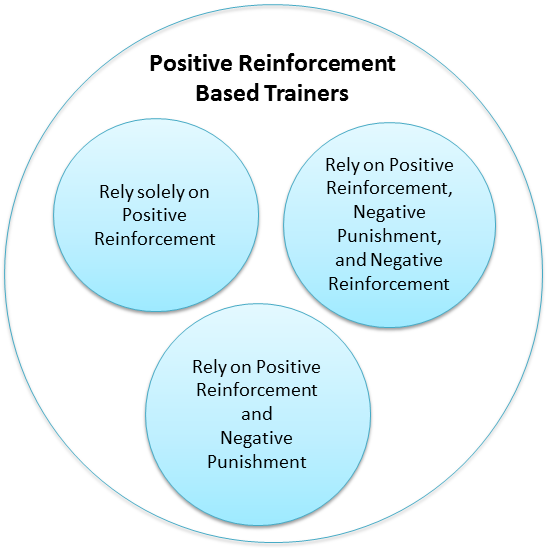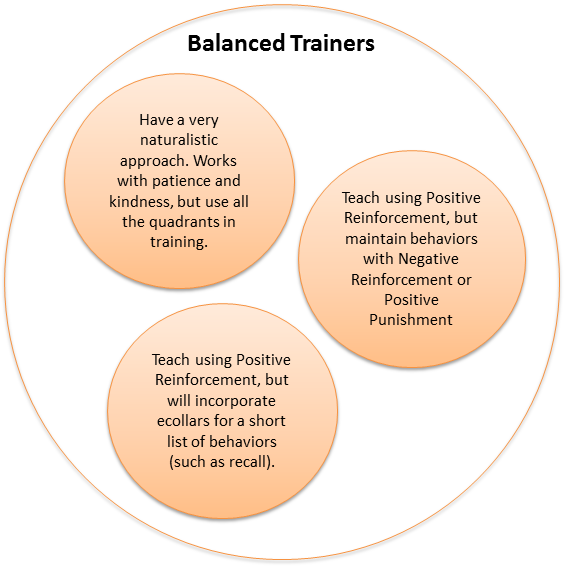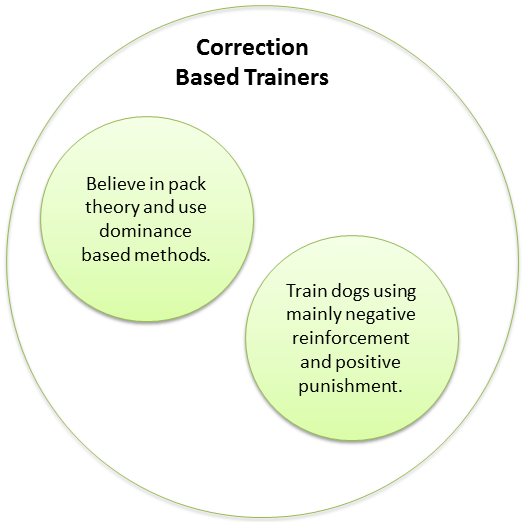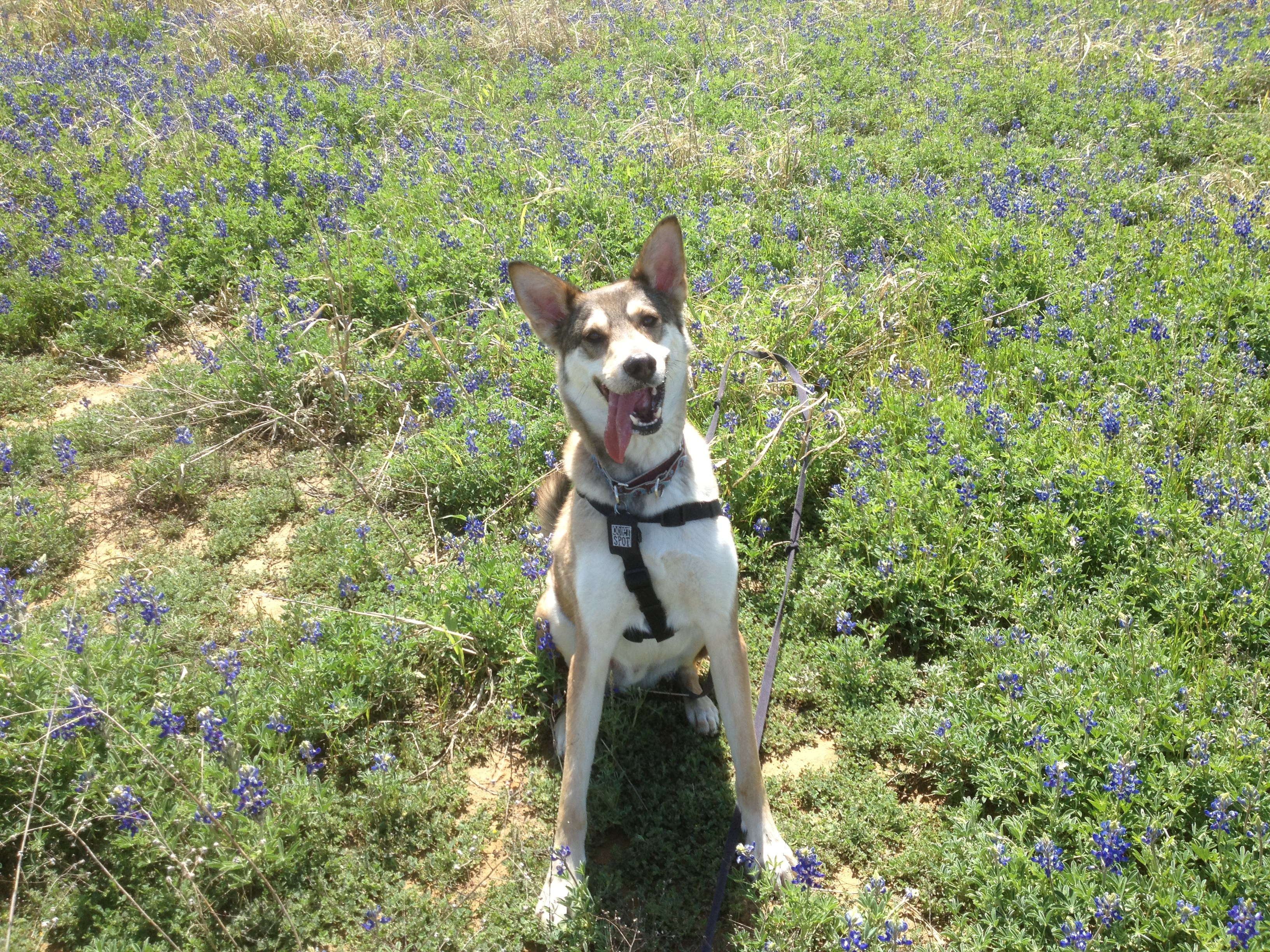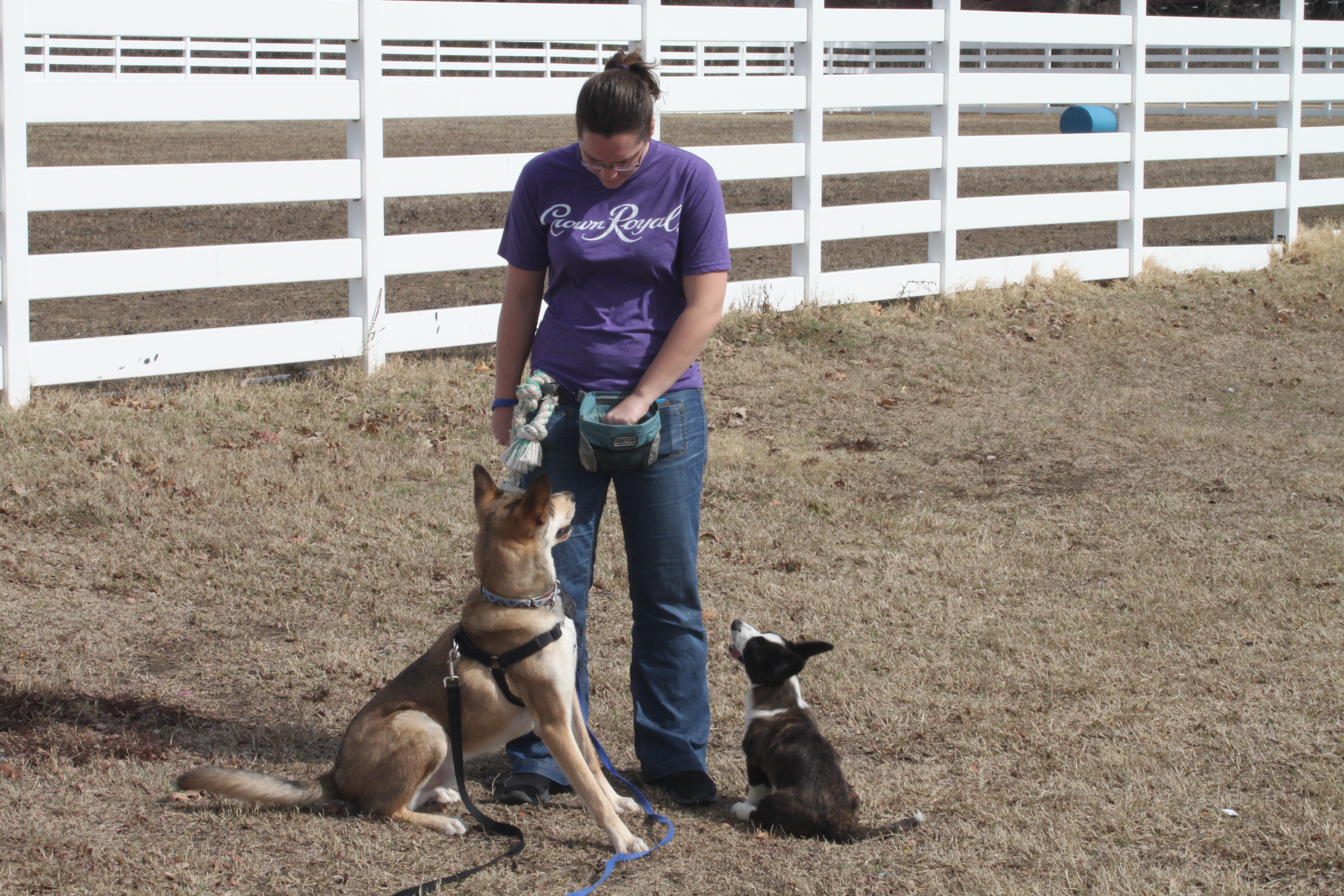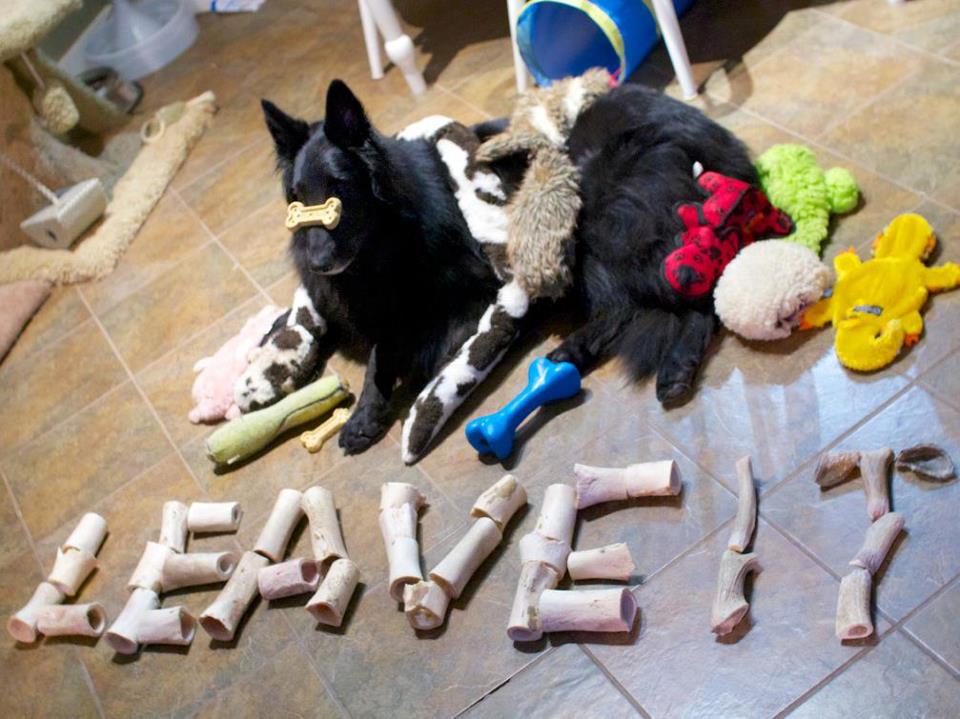Watch out! I’m going to use labels to describe dog trainers in this post! Read at your own risk!
I am on a lot of Facebook groups. The forum-like setting creates a great environment to interact with many different people and trainers from all over the globe. There’s nothing out there like it. I recently joined a new group that has a mission of joining together different kinds of dog trainers. While it has been difficult to deal with some people and their beliefs, others have welcomed discussion with wide open arms. It has been a wonderful learning experience on open-mindedness and critical thinking. It has really made it clear to me that it is more than just two sides of the fence or black and white. It is a spectrum and each person has their own style of training. I’ve listed some below, but really many people are a mix of what I’ve laid out. In order to get my thoughts together on this wide spectrum of trainers, I decided to make some graphics (I’m a visual learner). Before you read my analysis of dog trainers, please read up on Skinner’s Operant Conditioning Quadrants if you aren’t fluent in them yet!
Positive Reinforcement Based Trainers
This group of trainers relies very heavily on their use of positive reinforcement, but vary in their opinions on what other quadrants to use. Some only use positive reinforcement (to the best of their ability) and then there are some that use negative punishment and negative reinforcement along with positive reinforcement. They commonly refer to themselves as “force-free” trainers because all refuse to use tools such as choke, prong, or shock collars.
Some in this group do their very best to use only positive reinforcement, but there are many who use negative punishment quite often as well. A small portion of trainers in this category are also alright with using negative reinforcement when they deem is necessary on a case by case basis.
I consider myself to be a part of this group. I do my best to rely on positive reinforcement and use a little negative punishment when I deem it necessary. As of this moment in time, I do not believe the use of negative reinforcement or positive punishment is necessary.
Balanced Trainers
Balanced trainers have been accused of being “old school,” but the ones I’ve come across recently seem to really know their stuff and have chosen this way of training for a variety of reasons. Often, they like to say “I like using ALL the tools in my tool box.” They usually use positive reinforcement most of the time but are not hesitant about reaching into the other quadrants to train.
In this group, I’ve also included people who have a more naturalistic approach. Trainers who don’t think about the quadrants so much as “what the dog is telling them.” They don’t have a rigid approach to training like other more science-based trainers, but they are kind and consistent. They set clear rules and are fair in their training approach, but do not always stick to all positive reinforcement based training.
Correction Based Trainers
This is the group I used to be a part of. I believed dogs desired to be alpha and that I had to be the dominant one in the group to earn their respect and obedience. I had to walk through doorways first, not let them up on the couch, and not let them be ahead of me on leash. Correction based trainers are a very dedicated group. They believe, as I did, that dogs need the structure and pack leader to be happy and relaxed. They believe that without these, life was anarchy for dogs and that if we don’t assume the role of pack leader that dogs will feel stressed and feel like they have to take on the role. They believe they are making the sacrifice to take on the role as alpha so their dogs can relax and not worry about the world – just as they believe wolves do in the world.
Some in this group also train using mostly positive punishment and/or negative reinforcement. I find that there are fewer and fewer people in this category because the power of positive reinforcement is being spread and shared. Even those that train in this manner will often use treats and toys as rewards because the dog becomes visibly more motivated to work for them when those tools are present.
Conclusion
While I’ve done my best to capture the wide spectrum of trainers out there, many people are truly a mix of what I’ve talked about. The extremes such as purely positive or solely correction based are rare. It has really been fascinating to learn from a variety of people. I absolutely love seeing other people’s perspectives even if I don’t agree with them.
I find that where we differ the most is how we approach people who train with different tools or methods than we do. We all love dogs or we wouldn’t be in this profession. I think that is really important to keep in mind. We all work towards improving the lives of dogs and their people. We must approach each other as if we all have a common goal, because for the most part, we do!
Another thing that is important to realize is that no matter the method, it takes a good trainer to create a reliable and happy dog. On both “sides of the fence” there are people who are not proficient in the skills and precision it takes to train a dog accurately and there are people who are talented and who create dogs that are confident and skilled performers. There are good and bad representations of all training methods and tools.
I am really looking forward to moving past my biases in order to learn from the best trainers out there. Things like timing and management are incredibly important no matter the method you train so I look forward to learning from all trainers out there to see how I can incorporate better skills into my training style.
